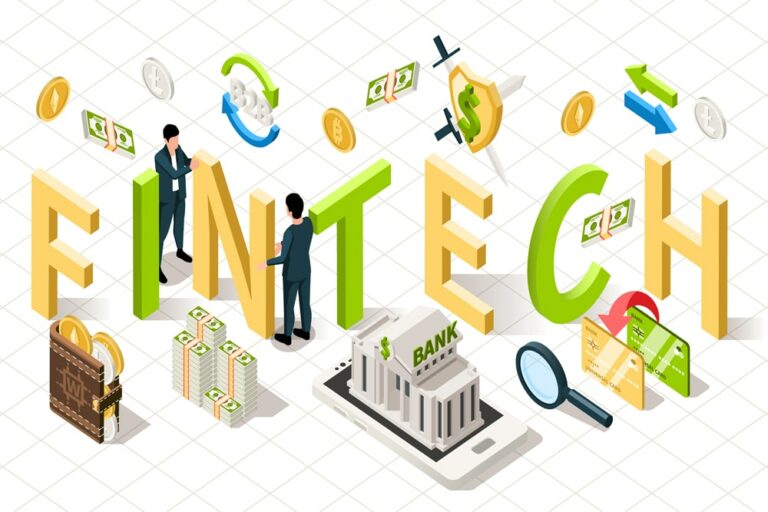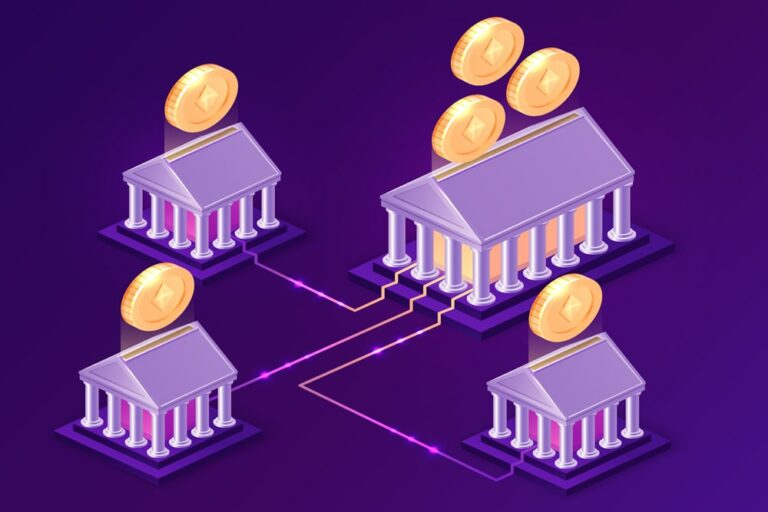In the realm of technology and finance, the emergence of blockchain technology has brought forth a paradigm shift that extends far beyond its initial association with cryptocurrencies like Bitcoin. Blockchain, often described as a decentralized and immutable ledger, is redefining the landscape of financial services. Beyond the world of digital coins, it’s illuminating a path towards greater transparency, security, and efficiency in the financial sector. Join us on this insightful journey as we explore “Blockchain Beyond Bitcoin: Applications in Financial Services.”
At its core, blockchain is a distributed ledger technology that offers a transparent, secure, and tamper-resistant way to record transactions. Its ability to function without the need for intermediaries, while maintaining trust, makes it an ideal fit for the complex world of financial services. In this article, we’ll delve into the diverse and transformative applications of blockchain technology, illuminating the ways it’s revolutionizing traditional banking, smart contracts, asset tokenization, decentralized finance (DeFi), and supply chain finance.
I. Blockchain in Banking: The financial world is no stranger to change, and blockchain is at the forefront of that evolution. This first section will uncover the many ways in which blockchain is reshaping traditional banking. From expediting cross-border payments to providing a secure and transparent record of transactions, we’ll showcase how blockchain technology is making financial operations smoother and more secure.
II. Smart Contracts and Financial Agreements: Moving forward, we’ll delve into the fascinating world of smart contracts. These self-executing contracts, written in code, automate financial agreements, eliminating the need for intermediaries. We’ll explore how smart contracts are revolutionizing industries like lending and insurance, streamlining processes, and enhancing trust.
III. Tokenization of Assets: The digitization of real-world assets is another captivating application of blockchain in finance. By representing assets like real estate, stocks, and art as tokens on a blockchain, it’s transforming accessibility and liquidity. In this section, we’ll dive into how this asset tokenization is revolutionizing traditional finance practices.
IV. Decentralized Finance (DeFi): The Decentralized Finance (DeFi) movement is rapidly gaining momentum. It’s building a financial system on blockchain technology, enabling decentralized lending, borrowing, trading, and more. In this segment, we’ll explore the tremendous potential of DeFi, while also shedding light on the associated risks and regulatory considerations.
V. Supply Chain Finance: Finally, we’ll venture into the world of supply chain finance. Blockchain’s ability to enhance transparency and traceability is revolutionizing supply chain practices. We’ll demonstrate how this technology is improving inventory management, optimizing invoice factoring, and reshaping the very foundation of supply chain finance.
As we embark on this journey into the world of “Blockchain Beyond Bitcoin,” we’ll uncover how this technology is not just a buzzword but a powerful force of change in the financial realm. It’s illuminating new avenues, disrupting traditional practices, and offering a glimpse into a future where financial services are more accessible, efficient, and secure than ever before. Join us as we explore the transformative revolution of blockchain in financial services.
Blockchain in Banking:
Blockchain technology has entered the hallowed halls of traditional banking, causing a stir and setting the stage for a monumental transformation. Here, we’ll unravel the myriad ways in which blockchain is rewriting the rules of banking, enhancing its efficiency, and redefining trust in financial transactions.
1. Streamlined Cross-Border Payments:
One of the most immediate and practical applications of blockchain in banking is the facilitation of cross-border payments. Traditional international money transfers are often sluggish and expensive due to multiple intermediaries and complex verification processes. Blockchain swoops in as the hero, offering faster, cheaper, and more transparent cross-border transactions. With blockchain, banks can settle transactions in near real-time, significantly reducing costs and the potential for errors.
2. Immutable Transaction Records:
Transparency and security are at the heart of blockchain’s appeal in banking. The technology maintains an immutable record of transactions, meaning once a transaction is recorded on the blockchain, it cannot be altered or deleted. This feature provides an unparalleled level of transparency and security in financial transactions, reducing the risk of fraud and errors.
3. Enhanced KYC (Know Your Customer) Processes:
Blockchain is streamlining the KYC process, which is crucial for banks to verify the identities of their customers. Through a shared blockchain network, financial institutions can securely access and verify customer information, eliminating the need for customers to submit redundant documentation when opening accounts with different banks. This not only expedites onboarding but also enhances data security.
4. Efficient Trade Finance:
The world of trade finance is complex, with numerous parties involved in each transaction. Blockchain simplifies trade finance by providing a single, shared ledger that all participants can access. This reduces the risk of fraud, eliminates discrepancies, and accelerates the entire trade finance process, making it easier and more efficient for all parties involved.
5. Digital Identity and Authentication:
Blockchain is playing a pivotal role in developing digital identity solutions. Instead of relying on paper documents and passwords, individuals can have secure digital identities stored on a blockchain. Banks can use this technology to ensure the authenticity of their customers, safeguarding against identity theft and fraudulent activities.
In the realm of banking, blockchain isn’t merely a technological innovation; it’s a game-changer. It’s simplifying complex processes, reducing costs, enhancing security, and ultimately reshaping the industry. As blockchain continues to mature and gain wider acceptance, traditional banks are finding themselves at the cusp of a digital revolution that’s poised to redefine the way they operate and interact with customers. The future of banking is being written in the digital ledger of blockchain, and the transformation has only just begun
Smart Contracts and Financial Agreements:
Blockchain’s influence on the financial services industry extends beyond transactions and into the realm of smart contracts. These self-executing contracts with the terms of the agreement written into code are revolutionizing how financial agreements are created, executed, and enforced.
Efficient Contract Execution:
Traditional financial agreements often involve lengthy and manual processes for execution, including the need for intermediaries and time-consuming paperwork. Smart contracts, on the other hand, enable automated, instantaneous execution of agreements once predefined conditions are met. This expedites everything from loan disbursements to insurance claims, reducing the need for middlemen and the potential for human errors.
Transparency and Trust:
Smart contracts are stored on a blockchain, providing a transparent, immutable record of all transactions and contract executions. This transparency builds trust among all parties involved, as they can independently verify that the contract’s terms were met. This trust is particularly valuable in financial services, where trustworthiness is paramount.
Reduced Costs and Disputes:
By eliminating intermediaries and automating contract execution, smart contracts significantly reduce operational costs for financial institutions. Additionally, the transparency of blockchain reduces the likelihood of disputes and costly litigation, as all parties can easily access and verify the contract’s terms and execution.
Cross-Border Transactions:
Smart contracts are not limited by geographical borders. Financial institutions can use them to facilitate cross-border transactions and international agreements. This can streamline processes such as global supply chain financing and reduce the complexities associated with international financial agreements.
Risk Management:
Blockchain-based smart contracts also have the potential to enhance risk management in financial services. Through these contracts, institutions can automate risk assessments, trigger insurance policies in real-time based on predefined criteria, and more effectively manage credit and lending risks.
Tokenization of Assets:
Blockchain enables the tokenization of various assets, from real estate to art. This means that traditional assets can be represented as digital tokens on a blockchain, making them more accessible for investors. Smart contracts can then govern the ownership, transfer, and trading of these tokens, opening up new investment opportunities.
In the financial services industry, smart contracts are heralding a future where agreements are executed seamlessly, with reduced costs, increased transparency, and minimized risk. They’re not just changing how financial institutions interact with their customers; they’re fundamentally altering the way financial agreements are structured and fulfilled, opening doors to innovative financial products and services. The integration of smart contracts into the financial landscape is a testament to the transformative power of blockchain technology.
Tokenization of Assets:
One of the most compelling applications of blockchain technology in the financial services sector is the tokenization of assets. This innovative approach involves representing physical and traditionally illiquid assets as digital tokens on a blockchain. It’s a concept that’s gaining significant traction and is poised to reshape how investments are made, assets are traded, and wealth is managed.
Diverse Asset Classes:
Tokenization is not limited to a specific asset class; it’s a versatile technology applicable to a wide range of assets. These assets can include real estate properties, fine art, stocks, bonds, commodities, and even intellectual property. The ability to tokenize such diverse assets is a game-changer, making traditionally illiquid investments more accessible and liquid.
Fractional Ownership:
Tokenization enables fractional ownership of high-value assets. Instead of needing to purchase an entire real estate property, for example, investors can buy fractional tokens representing a share of the property. This fractional ownership model lowers the barriers to entry for individual investors and allows them to diversify their portfolios more easily.
Liquidity and Accessibility:
Historically, certain assets, like fine art or real estate, have been challenging to buy, sell, or trade due to their illiquid nature. Tokenization transforms these assets into digital tokens that can be traded 24/7 on blockchain-based marketplaces. This newfound liquidity provides investors with greater flexibility and accessibility.
Reduced Costs:
Traditional asset transactions often involve intermediaries, such as brokers, custodians, and banks, which add significant costs. With tokenization, many of these intermediaries are bypassed. Smart contracts on the blockchain automate the process of transferring ownership, reducing fees and transaction costs.
Enhanced Transparency and Security:
Blockchain technology ensures transparency and immutability of ownership records. Each transaction is recorded on a distributed ledger, creating an auditable history of asset ownership. This transparency reduces the risk of fraud and disputes, providing greater confidence to investors.
Global Accessibility:
Tokenization has the potential to democratize investment opportunities by allowing global access to assets. Investors from different parts of the world can participate in the same markets and access a diverse range of assets, fostering a more inclusive and interconnected global economy.
Regulatory Considerations:
While tokenization offers numerous benefits, it also presents regulatory challenges. Regulators are actively working on frameworks to address issues related to investor protection, compliance, and market integrity in the tokenized asset space. The evolution of these regulations will play a crucial role in shaping the future of tokenized assets.
Tokenization of assets is not merely a trend; it represents a fundamental shift in how we perceive and interact with investments. As blockchain technology continues to mature and regulatory frameworks develop, we can expect to see a broader array of tokenized assets, creating new opportunities and challenges for investors and financial institutions alike. The tokenization revolution is paving the way for a more accessible, liquid, and inclusive global financial landscape.
Decentralized Finance (DeFi):
Decentralized Finance, or DeFi, is a groundbreaking movement within the financial services industry that leverages blockchain technology to create an open and permissionless ecosystem for financial transactions and services. Unlike traditional finance, DeFi operates without intermediaries like banks, brokers, or centralized authorities. It is built on the principles of decentralization, transparency, and accessibility, offering a range of financial services and products to anyone with an internet connection.
Key Components of DeFi:
Decentralized Exchanges (DEXs): DeFi platforms offer decentralized exchanges where users can trade cryptocurrencies and other digital assets directly with one another, removing the need for traditional centralized exchanges. Popular DEXs like Uniswap and SushiSwap facilitate peer-to-peer trading with higher liquidity and lower fees.
Lending and Borrowing: DeFi protocols enable users to lend their assets and earn interest or borrow assets by collateralizing their holdings. This opens up opportunities for passive income and access to liquidity without the involvement of traditional banks. Platforms like Aave and Compound are leading the way in DeFi lending and borrowing.
Stablecoins: Stablecoins like USDC, DAI, and USDT are a critical component of DeFi. These digital assets maintain a stable value by being pegged to a reserve asset, typically a fiat currency. They provide a safe haven for traders and investors in the highly volatile cryptocurrency market.
Yield Farming and Liquidity Provision: DeFi users can provide liquidity to various protocols and earn rewards, often in the form of governance tokens. This practice, known as yield farming, has become a popular way to generate passive income within the DeFi space.
Automated Market Makers (AMMs): AMMs are algorithms that facilitate liquidity provision on decentralized exchanges. They determine token prices based on supply and demand, allowing for efficient trading without order books. Uniswap pioneered the AMM model, which has since been adopted by many other DeFi projects.
Benefits and Challenges:
Accessibility: DeFi has the potential to bring financial services to the estimated 1.7 billion unbanked or underbanked individuals worldwide, providing them with access to savings, lending, and investment opportunities.
Transparency:
All DeFi transactions and smart contracts are recorded on public blockchains, ensuring transparency and reducing the risk of fraud or manipulation.
Censorship Resistance: DeFi platforms are resistant to censorship and can’t be shut down by governments or centralized authorities, ensuring financial freedom.
Interoperability:
DeFi projects are often built on open-source protocols, allowing for interoperability and collaboration between different platforms.
Challenges:
DeFi is not without its challenges, including security vulnerabilities, regulatory concerns, and scalability issues. High-profile hacks and exploits have highlighted the importance of robust security measures in the DeFi space. Additionally, regulatory scrutiny is increasing as governments seek to understand and regulate this rapidly evolving sector.
Despite these challenges, DeFi represents a transformative shift in the financial industry, one that empowers individuals, enhances financial inclusion, and challenges the status quo of traditional finance. As the DeFi ecosystem continues to evolve and mature, it holds the potential to revolutionize the way we manage, access, and invest our financial resources.
Supply Chain Finance:
Supply chain finance, often referred to as SCF, is a specialized financial service that addresses the cash flow challenges faced by businesses involved in supply chains. It’s a critical component of global trade and commerce, as it helps businesses optimize their working capital and ensures the smooth flow of goods and services from suppliers to end customers. While not inherently a product of blockchain technology, blockchain has the potential to revolutionize supply chain finance by enhancing transparency, reducing fraud, and streamlining processes.
Key Aspects of Supply Chain Finance:
Working Capital Optimization: One of the primary goals of supply chain finance is to optimize working capital for all parties involved. Suppliers often face cash flow constraints while waiting for payment, while buyers want to extend payment terms. SCF solutions bridge this gap by providing early payment options to suppliers without affecting the buyers’ cash flow.
Invoice Financing: Invoice financing is a common SCF technique. Suppliers can sell their invoices to a financial institution or a third-party platform at a discount in exchange for immediate cash. This benefits suppliers by improving their cash flow, and buyers can extend payment terms while maintaining good relationships with their suppliers.
Blockchain’s Role: Blockchain technology can enhance supply chain finance by creating a transparent and immutable ledger of transactions. Smart contracts on a blockchain can automate payment processes based on predefined criteria, such as delivery confirmations or quality inspections. This reduces the risk of disputes and fraud.
Trade Finance: Trade finance within supply chain finance covers various instruments like letters of credit and bank guarantees. Blockchain can digitize and streamline these processes, making cross-border transactions more efficient and secure.
Benefits and Challenges:
Benefits:
Efficiency: SCF solutions powered by blockchain can automate manual processes, reducing administrative burdens and the risk of errors.
Transparency: Blockchain’s transparent ledger ensures that all parties have access to a single source of truth, reducing disputes and discrepancies.
Reduced Fraud: Smart contracts and digital identities can enhance security and reduce the risk of fraud in supply chain finance.
Financial Inclusion: SCF solutions can extend financing to smaller suppliers who may have limited access to traditional financing options.
Challenges:
Adoption: Widespread adoption of blockchain-based supply chain finance solutions requires buy-in from various stakeholders, including businesses, financial institutions, and regulators.
Interoperability: Ensuring that different blockchain systems can communicate and transact with each other seamlessly is a challenge that needs to be addressed.
Regulatory Environment: The use of blockchain and cryptocurrencies in supply chain finance may face regulatory scrutiny, particularly in cross-border transactions.
Scalability: As supply chain finance involves a multitude of transactions, scalability is a concern for blockchain networks in handling high transaction volumes.
In summary, supply chain finance plays a pivotal role in the global economy by ensuring the efficient flow of goods and services. When combined with blockchain technology, it has the potential to enhance transparency, reduce fraud, and optimize working capital, benefitting businesses across the supply chain. However, addressing challenges related to adoption, interoperability, regulation, and scalability is crucial for the successful integration of blockchain into supply chain finance.




